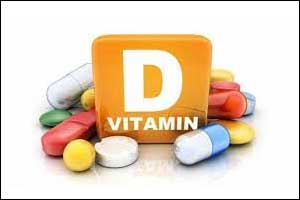- Home
- Editorial
- News
- Practice Guidelines
- Anesthesiology Guidelines
- Cancer Guidelines
- Cardiac Sciences Guidelines
- Critical Care Guidelines
- Dentistry Guidelines
- Dermatology Guidelines
- Diabetes and Endo Guidelines
- Diagnostics Guidelines
- ENT Guidelines
- Featured Practice Guidelines
- Gastroenterology Guidelines
- Geriatrics Guidelines
- Medicine Guidelines
- Nephrology Guidelines
- Neurosciences Guidelines
- Obs and Gynae Guidelines
- Ophthalmology Guidelines
- Orthopaedics Guidelines
- Paediatrics Guidelines
- Psychiatry Guidelines
- Pulmonology Guidelines
- Radiology Guidelines
- Surgery Guidelines
- Urology Guidelines
Vit D independently, inversely tied to cholesterol in children

Higher serum 25(OH)D (vitamin D) was independently associated with lower total cholesterol, LDL, and HDL cholesterol and triglycerides among prepubertal children, reports a study published in The Journal of Clinical Endocrinology and Metabolism.
Vitamin D regulates calcium, phosphorus, and bone metabolism, and its deficiency is associated with rickets in children and osteomalacia in adults. Increased serum 25(OH)D may be due to a healthy lifestyle, including regular exercise, spending plenty of time outdoors resulting in increased vitamin D production in the skin, and a healthy diet, all of which may also be associated with a more favorable plasma lipid profile.
Sonja Soininen et al. conducted a study to examine the associations and interactions of 25(OH)D and related gene variants with lipids in children.
The study involved 512 children 6 to 8 years of age. Venous blood samples for the measurement of 25(OH)D and lipids were taken after 12-hours overnight fasting. Lipids were measured from nonfrozen plasma samples. DNA was isolated from the blood mononuclear cells and genotyping was performed. The researchers selected SNPs that are located in genes involved in vitamin D metabolism and have been associated with 25(OH)D. Overall seven SNPs from five regions were found in the data set.
Read Also: High vitamin D levels decrease risk of colorectal cancer
Key study findings:
- Higher 25(OH)D was associated with lower total cholesterol, LDL cholesterol, HDL cholesterol, and triglycerides adjusted for age and sex.
- Children in the highest quartile of 25(OH)D (>79 nmol/L) had the lowest total cholesterol adjusted for age and sex and after additional adjustment for body fat percentage and average daylight time.
- Children in the highest quartile of 25(OH)D also had the lowest LDL cholesterol adjusted for age and sex.
- The differences in HDL cholesterol or triglycerides across the quartiles of 25(OH)D were not statistically significant.
- Of other factors, higher body fat percentage was associated with higher total and LDL cholesterol, higher triglycerides, and lower HDL cholesterol.
- The G allele of rs2282679 in DBP and the A allele of rs12794714 in CYP2R1 were negatively associated and the A allele of rs10741657 in CYP2R1 was positively associated with 25(OH)D adjusted for age and sex
- The G allele of rs6599638 in C10orf88 was positively associated with HDL cholesterol adjusted for age and sex.
- The A allele of rs12794714 in CYP2R1 was negatively associated with total and LDL cholesterol adjusted for age and sex.
“The strength of our study is a population sample of children with a low prevalence of diseases and medications possibly affecting the association between 25(OH)D and lipids,”write the authors.
The study concluded that serum 25(OH)D was associated with lower total, LDL, and HDL cholesterol independent of body fat percentage, dietary factors, physical activity, sedentary behavior, daylight time, and socioeconomic status.
For reference log on to https://doi.org/10.1210/jc.2018-00335

Disclaimer: This site is primarily intended for healthcare professionals. Any content/information on this website does not replace the advice of medical and/or health professionals and should not be construed as medical/diagnostic advice/endorsement or prescription. Use of this site is subject to our terms of use, privacy policy, advertisement policy. © 2020 Minerva Medical Treatment Pvt Ltd